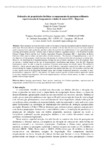Por favor, use este identificador para citar o enlazar este ítem:
http://www.alice.cnptia.embrapa.br/alice/handle/doc/902389Registro completo de metadatos
| Campo DC | Valor | Lengua/Idioma |
|---|---|---|
| dc.contributor.author | VICENTE, L. E. | pt_BR |
| dc.contributor.author | VICTORIA, D. de C. | pt_BR |
| dc.contributor.author | BOLFE, E. L. | pt_BR |
| dc.contributor.author | ANDRADE, R. G. | pt_BR |
| dc.date.accessioned | 2011-10-05T11:11:11Z | pt_BR |
| dc.date.accessioned | 2011-10-05T11:11:11Z | pt_BR |
| dc.date.available | 2011-10-05T11:11:11Z | pt_BR |
| dc.date.available | 2011-10-05T11:11:11Z | pt_BR |
| dc.date.created | 2011-10-05 | pt_BR |
| dc.date.issued | 2011 | pt_BR |
| dc.identifier.citation | In: SIMPÓSIO BRASILEIRO DE SENSORIAMENTO REMOTO, 15., 2011, Curitiba. Anais... São José dos Campos: INPE, 2011. | pt_BR |
| dc.identifier.uri | http://www.alice.cnptia.embrapa.br/alice/handle/doc/902389 | pt_BR |
| dc.description | Much attention has been devoted recently to the matter of pasture degradation and the identification of such areas. The main interests in degraded pastures are related to the fact that the recovery of such areas could be used to increase beef cattle production and thus reduce the need for the establishment of new agricultural fields, lowering deforestation pressure. Another topic of interest related to degraded pastures is the Brazilian National Climate Change Policy and the Low Carbon Agriculture Program (Programa ABC ? Agricultura de Baixo Carbono) which aims to reduce national carbon dioxide emissions. The recovery of degraded pasture is one of the objectives of this program, which increases the amount of carbon stored in the soil, acting as a carbon sink. However, the identification of degraded pastures through the use of remote sensing is still in development. Here we present a method based on the use of hyperespectral classification and images from the EO1-Hyperion hyperspectral sensor in order to map the occurrence of pasture areas among the cerrado region. The method is based on a linear spectral unmixing model that can be linked to vegetation characteristics and was capable of discriminating the signals of natural savanna vegetation from pasture and bare soil. The procedure used was able to map pasture areas in the Brazilian Pantanal region and estimate biophysical parameters associated to non-photosynthetic vegetation (ANPV ? dry matter). As future research, spectral mixture analysis approache similar to the ones obtained from Hyperion will be developed based on different orbital sensors, in order to evaluate pasture areas in larger regions. | pt_BR |
| dc.language.iso | por | pt_BR |
| dc.rights | openAccess | pt_BR |
| dc.subject | Espectroscopia de imageamento | pt_BR |
| dc.subject | Modelo linear de mistura | pt_BR |
| dc.subject | Agricultura de baixo carbono | pt_BR |
| dc.title | Estimativa de propriedades biofísicas no mapeamento de pastagens utilizando espectroscopia de imageamento e dados do sensor EO1-Hyperion. | pt_BR |
| dc.type | Artigo em anais e proceedings | pt_BR |
| dc.date.updated | 2019-05-03T11:11:11Z | pt_BR |
| dc.format.extent2 | p. 8575-8582. | pt_BR |
| riaa.ainfo.id | 902389 | pt_BR |
| riaa.ainfo.lastupdate | 2019-05-03 -03:00:00 | pt_BR |
| dc.contributor.institution | LUIZ EDUARDO VICENTE, CNPM; DANIEL DE CASTRO VICTORIA, CNPM; EDSON LUIS BOLFE, CNPM; RICARDO GUIMARAES ANDRADE, CNPM. | pt_BR |
| Aparece en las colecciones: | Artigo em anais de congresso (CNPM)  | |
Ficheros en este ítem:
| Fichero | Descripción | Tamaño | Formato | |
|---|---|---|---|---|
| Vicente1SBSR.pdf | 831.44 kB | Adobe PDF |  Visualizar/Abrir |









